Our Favorites: Exhibitions and Events in 2016
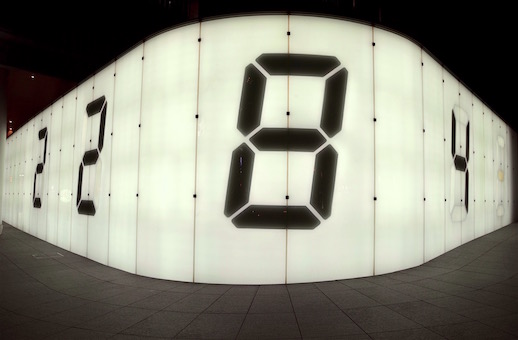
Nick West – Tatsuo Miyajima, Chiharu Shiota and more
Ordinarily, the media I gravitate towards is installation art but some of the most captivating exhibitions this year involved video works. Masaharu Sato’s unanswered calls and simulated cityscapes in “Tokyo Trace” at Hara Museum of Contemporary Art (Tokyo) was a breakout show for the artist, rightfully acknowledging his subtle animations in a museum context.
Having spent some time researching the art that occupies public spaces in Tokyo, I was thrilled to finally see Tatsuo Miyajima’s “Counter Void” (2003) illuminated in Roppongi, even if the circumstances for it being on during the first weekend of March were to commemorate five years having passed since 3.11.
Despite text-based artworks having the potential to be rather dry, Yukinori Yanagi’s “Project Article 9” at BankART Studio NYK was a chilling experience to encounter. Streaming the part of the Japanese constitution that outlaws war as a means to settle international disputes, dozens of LED displays had been toppled over, creating a cemetery-like space of neglected ideals.
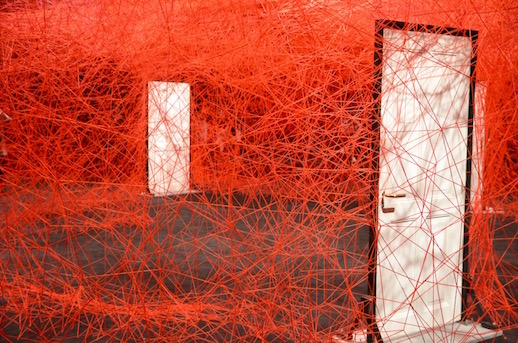
Also in Yokohama during the autumn was Chiharu Shiota’s immersive installation “The Locked Room”. With Shiota having represented Japan at the 56th Venice Biennale in 2015, it was inspiring to see an artistic director with the farsightedness to break with Venice’s exclusivity by inviting Shiota to extend her elaborate work in Kanagawa.
And finally, Pierre Huyghe’s sound and video piece “A Journey that Wasn’t” (2005) at Espace Louis Vuitton had me spellbound. Among the bright ideas of transposing landscape topography into musical scores and discovering fictional creatures on polar isles was a moment when an ice-covered Antarctic panorama begins to shift, revealing the awesome swell of the ocean beneath.
Paul Heaton – Toonz Returns
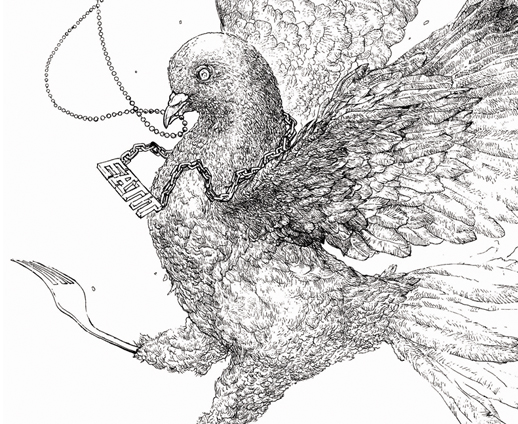
All in all 2016 has been a confusing year, with global issues threatening to overshadow any rays of light in the art world. The return of Imaitoonz in March, however, proved that there are still reasons to remain optimistic. After a self-imposed hiatus the Tokyo-based illustrator returned with some of his most powerful and politically charged work to date for ‘A&Q‘, his comeback exhibition in Harajuku. The solo show made an important statement at a time when many of his contemporaries struggled to find new ways of expressing shared concerns about Japan’s future.
Imaitoonz is rounding out the year with two exhibitions back-to-back at Un petit Garage in Ginza. The shows pick off where ‘A&Q’ left off, with new works like Out of the Red tackling complex issues with wildly creative compositions.
Lori Ono – Julia Margaret Cameron
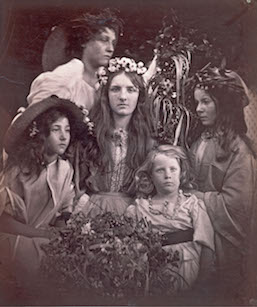
The Mitsubishi Ichigokan Museum’s wonderfully curated “Julia Margaret Cameron: A Woman Who Breathed Life into Photographs” was a show that made me think a lot about how far photography has come and how much of it is the same. I enjoyed the progress of seeing Cameron mature as a photographer. Some impressions that stuck with me were her struggles as a female in a male-dominated field and how she embraced imperfections in her images if she thought they added some kind of “magic” to her photos. I always appreciate the chance to think about photography rather than just look at images.
Susan Rogers Chikuba – Wave: Jun Morinaga

By any measure, 2016 was a year of cataclysmic sea changes. With each tumultuous event on the world’s political and economic fronts, we were reminded that it’s the humanistic sphere of the arts where we can draw together for strength, solace, and celebration of the very diversity that unites us.
So I choose to remember 2016 with the life-affirming theme of water—as much to focus on something pure and elemental as to honor the activists at Standing Rock who continue to fight in a struggle that impacts all of us. Photographer Jun Morinaga’s solo show Wave at gallery bauhaus was a meditation on fluidity, and an invitation to see beyond complex surfaces to a deeper, more essential realm. Shot from the late 1970s onward, his monochrome captures of ocean waves beating on rocks, jaunty spumes of windblown water, and patterned schools of fish bespoke themes of creation and variation, while images of placid waters hugging a shore, dappled by raindrops, or choked with ice evoked quiet transition. As such this ocean series provided heartening counterpoint to the artist’s seminal river photographs from the 1960s, a bleak, though powerful, body of work that showed dead and dying waterways clogged with industry-poisoned fish and fowl. And yet despite this message of hope in Mother Earth’s ability to renew herself, as the ongoing plight of the Water Protectors at Standing Rock attests, sometimes only a thin line of stewardship will separate healthy vigor from yet another cycle of destruction. May that delicate balance not be overturned in 2017.
Stuart Munro – Yoshimasu Gozo and Hyslom Art Center
Gozo Yoshimasu’s The Voice Between: The Art and Poetry of Yoshimasu Gozo at MOMAT (June 7–August 7) was fantastic. A retrospective to end all others. It covered things from geographic renderings in pressed copper and double-exposed photographs that spanned continents, to video diaries of philosophy and serendipity that pondered everything from breakfast to the weather. A central installation of all of Yoshimasu’s cassettes, from music to taped radio programs and dictation, took his disembodied voice appearing over and over again in other places (just like his video diaries and his poetry) and made it physical … literally. There was also an archive and interactive installation, where you could pick and listen to select recordings. He’s a lovely man, too. Sitting down for him to sign my book, he slapped me on the arm and laughed. Asking his age, he proceeded to carefully scribe the book with his signature, birthdate, and place of birth with hot pink felt tip pen while stamping the facing page with today’s date for good measure. He’s 70 going on 80 but could almost be half of that. The scope and range of his work is so great it would make even the most productive person weep.
Kyoto based collective Hyslom opened their own Hyslom Art Center just south of Kyoto Station in April alongside filmmaker and photographer Reiji Saito and painter Masaya Chiba. Hyslom, who inhabit landscapes as sites of transformation, treat their performances as forms of creative measure – dancing, tackling and generally coercing each other into engagement with their physical surroundings, making a point of not disrupting or disturbing and returning a site to its original state after leaving. The evening of April 3rd, 2016 began with screenings of video work by Saito, a talk by Chiba about his own painterly process and Hyslom unveiling the art center (still at that point under construction) with a semi-excavated hole and a mound of earth beside it. The old house resides in the Korean Burakumin part of the city, within throwing distance of other art initiatives like the Hotel Anteroom and Baexong Arts Kyoto, which collectively are aiming to transform the sleepier, less familiar part of town with a sense of community and good humor. This video of them introducing the art center is worth watching, if only for seeing their racing pigeon, their now ex-studio, and their natural comedic presence.
Michelle Zacharias – 2016 — The Year of the Woman
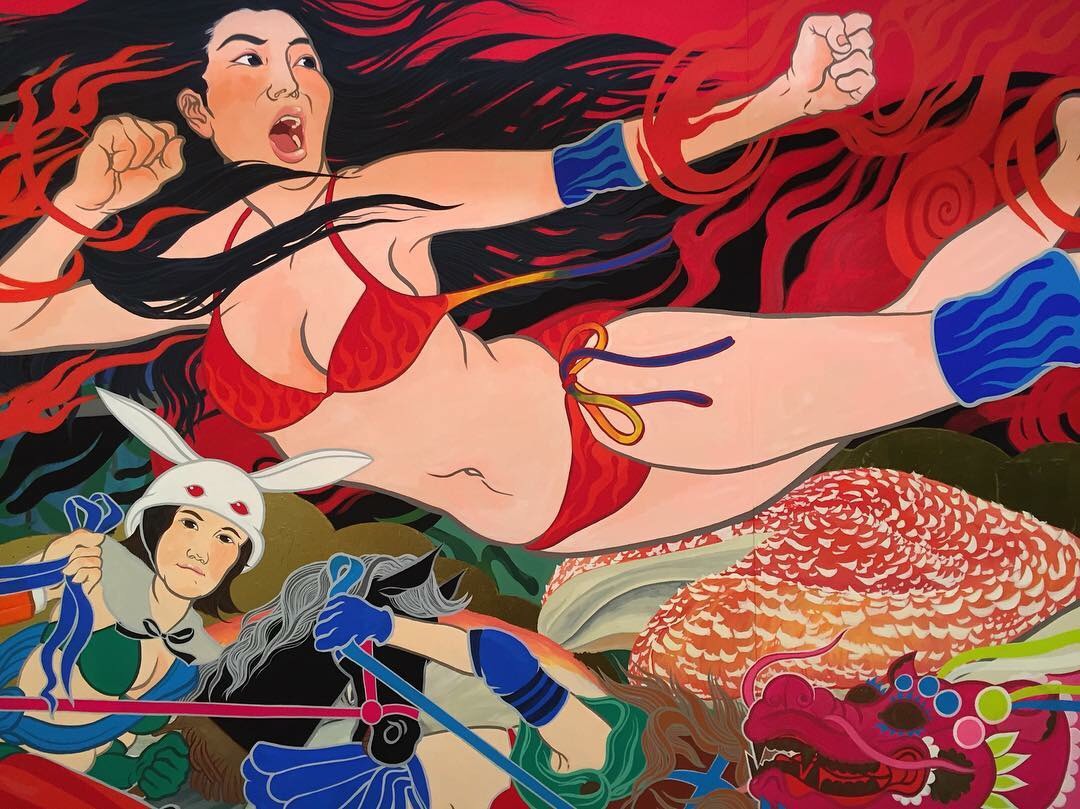
For me, 2016 was the Year of the Woman Artist. These were the artists whose events I most greatly anticipated or talked about. Their art could be seen at small or large galleries and also at alternative spaces. Their careers cover the nineteenth, twentieth, and twenty-first centuries and several countries.
As for artists in the twenty-first century, Nanami Ishihara, Tanya Tanaka, Cindy Mochizuki, and Karin Pisarikova continued that spirit of adventure and crossed national borders. Ishihara’s paintings at the Artcomplex Center of Tokyo (ACT) amazed. She played with images of women common to the Japanese iconography such as pearl divers and schoolgirls in uniform and used humor to make powerful but subtle feminist statements where the women were in control and not simply the sexualized subject of the male gaze. After a trip the United States, what will she make in 2017?
Justin Egli – The Art of Travel
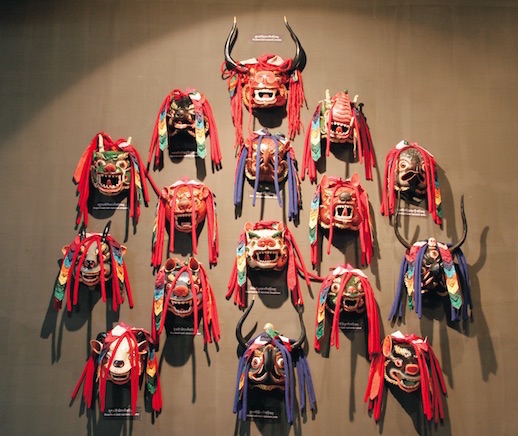
Having traveled extensively myself over the last 18 months, the exhibitions that stood out for me this year in Tokyo were the ones that crossed the boundaries between art, travel and history. At the Royal Ueno Museum, The Bhutan Exhibition – Hint to Happiness showcased a vibrant mix of art, clothing and religious artifacts from one of the world’s most mysterious and spiritual countries. On a personal note, I was in Kathmandu in Nepal when the earthquake struck in 2015, and so I never made it to neighbouring Bhutan. This exhibition served as a reminder why I wanted to visit in the first place. Travelling even further, the expansive The Universe and Art exhibition at the Mori Art Museum took me on a trip through the cosmos, the highlight being the fully immersive multimedia installation by teamLab. I’m always impressed by how the Mori manages to use its size and shape to become part of the exhibition itself, not just host it. Regarding next year, I’m looking forward to the Museum’s showcase of contemporary art from SE Asia – an exhibition that will start in July 2017.
Emma Ota – Another Window on Setouchi – Teshimanomado
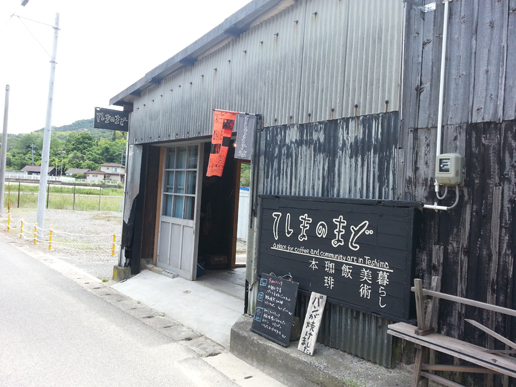
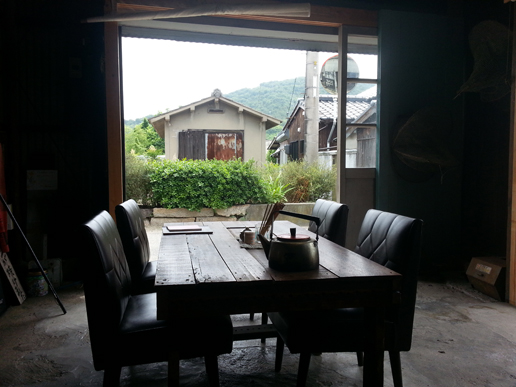
This year saw the latest round of the much-hyped Setouchi Art Trienniale, which brings thousands of tourists from around Japan and overseas to the shores of the islands speckling the channel between Honshu and Shikoku. With the mass management of the Benesse foundation, these small communities once waning from lack of industry have become the staple tourist attraction of the district, which sees streams of visitors tussling for a place on the boats from one island to the next. While this is an idyllic setting in which to encounter art, it appears that art has become an occupying force of these local neighborhoods, where large-scale installations and big name artists are eclipsing the cultural traditions and knowledge of each settlement.
With concern for how the cultural imperialism of contemporary art has taken over her homeland of Setouchi, artist Rika Aki returned from Tokyo in 2012 and set up the alternative space Teshimanomado. This cafe and art gathering spot, located just around the corner from the Tadanori Yokoo site on Teshima island, functions as a certain counter-point to the overwhelming presence of the Triennale and its offshoots. Whilst paying close care to the potential expressions of contemporary art, the space fosters the skills, creativity and traditions of local people and provides alternative insights into the history and environment of the island, which was once the site of a major struggle against the mass dumping of industrial waste, revealing a layer of the land the Triennale is often quick to cover over.
Organizing local history tours navigated by key persons of the village, documenting long-standing rituals following certain festivals in the region and coordinating with other small cafes and creative spaces a five year annual bread festival, Teshimanomado is about everyday making and encounter, with a particular sense of self-sustainability as an alternative to the big business of art festivals. If you are headed to Setouchi in 2017, be sure to pop in to Teshimanomado and experience another, more rooted and critical approach to art in this inland sea.
Jennifer Pastore – From Kabul to Fukushima
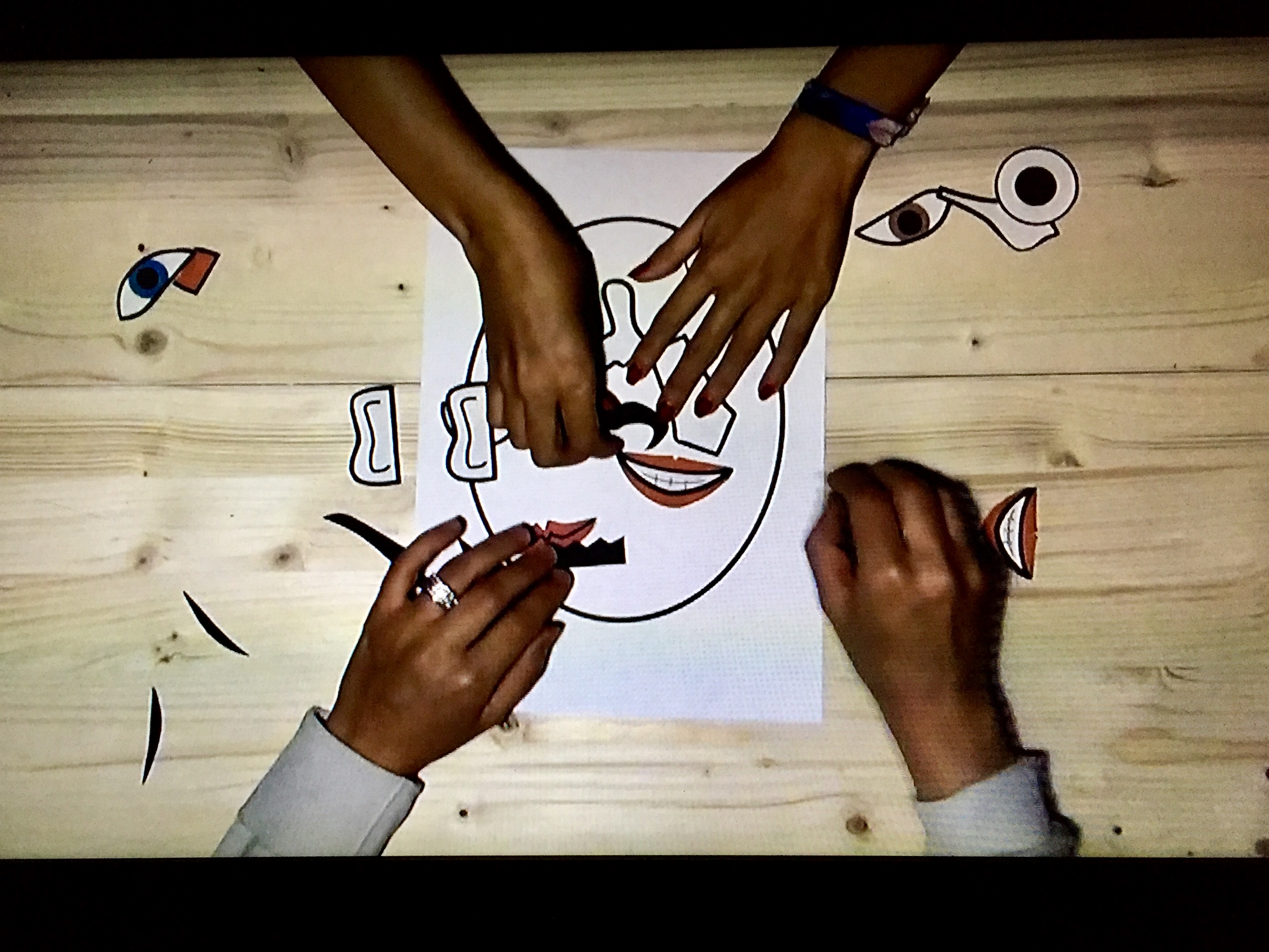
One of the most important themes of Tokyo’s year in art has been the preservation of culture and the culture that emerges from these acts of preservation, with two shows speaking most poignantly to this. First there was Hidden Treasures from the National Museum, Kabul, which displayed ancient artwork rescued and hidden from the Taliban until 2004, before being sent to travel the world in exhibitions under the motto “A Nation Stays Alive When its Culture Stays Alive.”
Later in the year Komagome Soko, one of the city’s most exciting new spaces, presented the simultaneous shows “Hello in Darkness” by Kyun-chome and “Shiver and Orgasm” by Bontaro Dokuyama. More than any other, this event felt the most vibrantly, pulsingly alive, with both artists diving bravely into themes taboo and complex. Through video, models, and photos Dokuyama documented the camp of anti-nuclear protest tents that had been staked out in front of the Ministry of Economy, Trade, and Industry until they were swept away under government order this year. Kyun-chome included the video “The Story of Making Lies” (2016), in which she taught evacuees of the Fukushima nuclear exclusion zone how to use Photoshop to delete barricades from images of their hometowns. In a year when faith and institutions were shaken and a grasp on truth and reality seemed increasingly tenuous, these exhibitions asserted the role of culture as testament of who we are, the lives we have lived, and the realities we can create.



